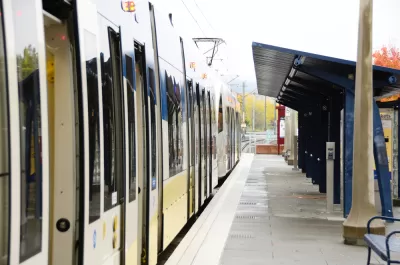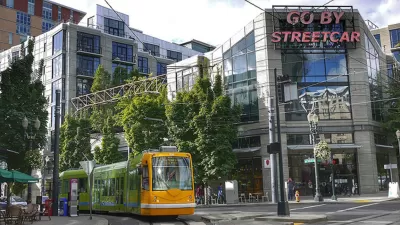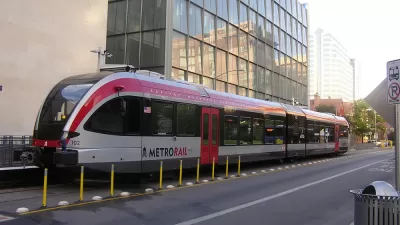The Southwest Corridor could become the most parking-heavy rail line every created by TriMet. Even parking-lite planning scenarios would spend as much as $100 million on parking garages.

Michael Andersen sounds a warning about plans to build $168 million worth of parking garages along the Southwest Corridor light rail line in Greater Portland.
Greater Portland’s “Southwest Corridor” line, as the route mostly along Barbur Boulevard and Interstate 5 is known, could become the most parking-heavy rail line in the history of TriMet, Portland’s regional transit agency. Tucked into one of the scenarios for the $2.7 billion, 13-station project are five free-to-use parking garages with up to 3,350 structured parking spaces among them.
According to Andersen, the parking heavy plan is an example of what not to do. So much so, Andersen breaks down the math of how much not parking that $168 million could fund: "to build or acquire roughly 1,000 below-market-rate homes along the line; to install networks of protected bike lanes for miles in every direction around each proposed rail station; or to double the scale of TriMet’s big 2018 regionwide bus service improvement for the next 12 years."
A detailed and lengthy case against the parking rage proposals follows.
FULL STORY: PORTLAND MIGHT SPEND TWICE AS MUCH ON FREE PARKING LOTS AS AFFORDABLE HOUSING ALONG ITS NEXT RAIL LINE

Trump Administration Could Effectively End Housing Voucher Program
Federal officials are eyeing major cuts to the Section 8 program that helps millions of low-income households pay rent.

Planetizen Federal Action Tracker
A weekly monitor of how Trump’s orders and actions are impacting planners and planning in America.

Ken Jennings Launches Transit Web Series
The Jeopardy champ wants you to ride public transit.

When Borders Blur: Regional Collaboration in Action
As regional challenges outgrow city boundaries, “When Borders Blur” explores how cross-jurisdictional collaboration can drive smarter, more resilient urban planning, sharing real-world lessons from thriving partnerships across North America.

Philadelphia Is Expanding its Network of Roundabouts
Roundabouts are widely shown to decrease traffic speed, reduce congestion, and improve efficiency.

Why Bike Lanes Are Good: An Explainer for the US Transportation Secretary
Sean Duffy says there’s no evidence that bike lanes have benefits. Streetsblog — and federal agencies’ own data — beg to differ.
Urban Design for Planners 1: Software Tools
This six-course series explores essential urban design concepts using open source software and equips planners with the tools they need to participate fully in the urban design process.
Planning for Universal Design
Learn the tools for implementing Universal Design in planning regulations.
Ada County Highway District
Clanton & Associates, Inc.
Jessamine County Fiscal Court
Institute for Housing and Urban Development Studies (IHS)
City of Grandview
Harvard GSD Executive Education
Toledo-Lucas County Plan Commissions
Salt Lake City
NYU Wagner Graduate School of Public Service





























